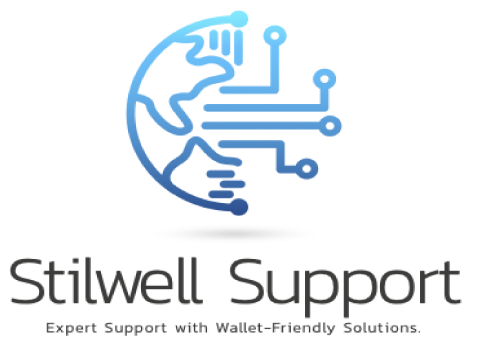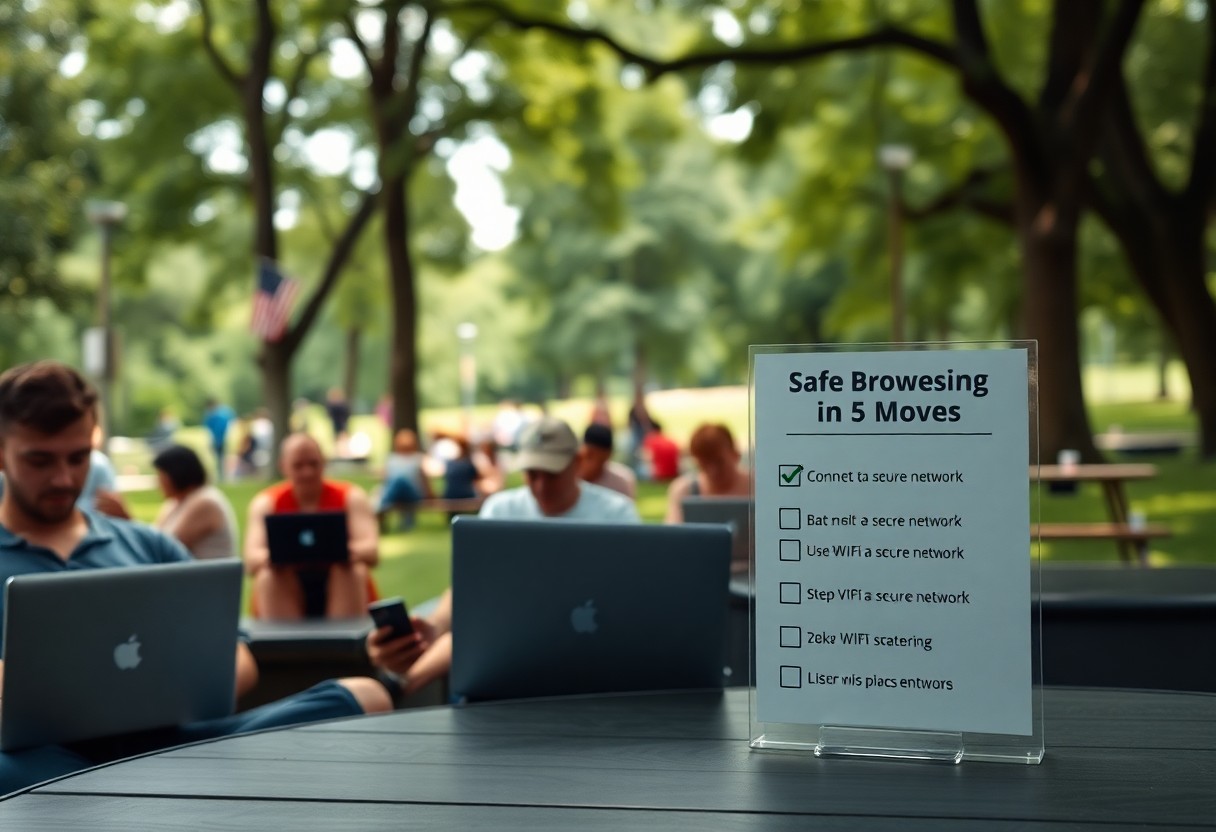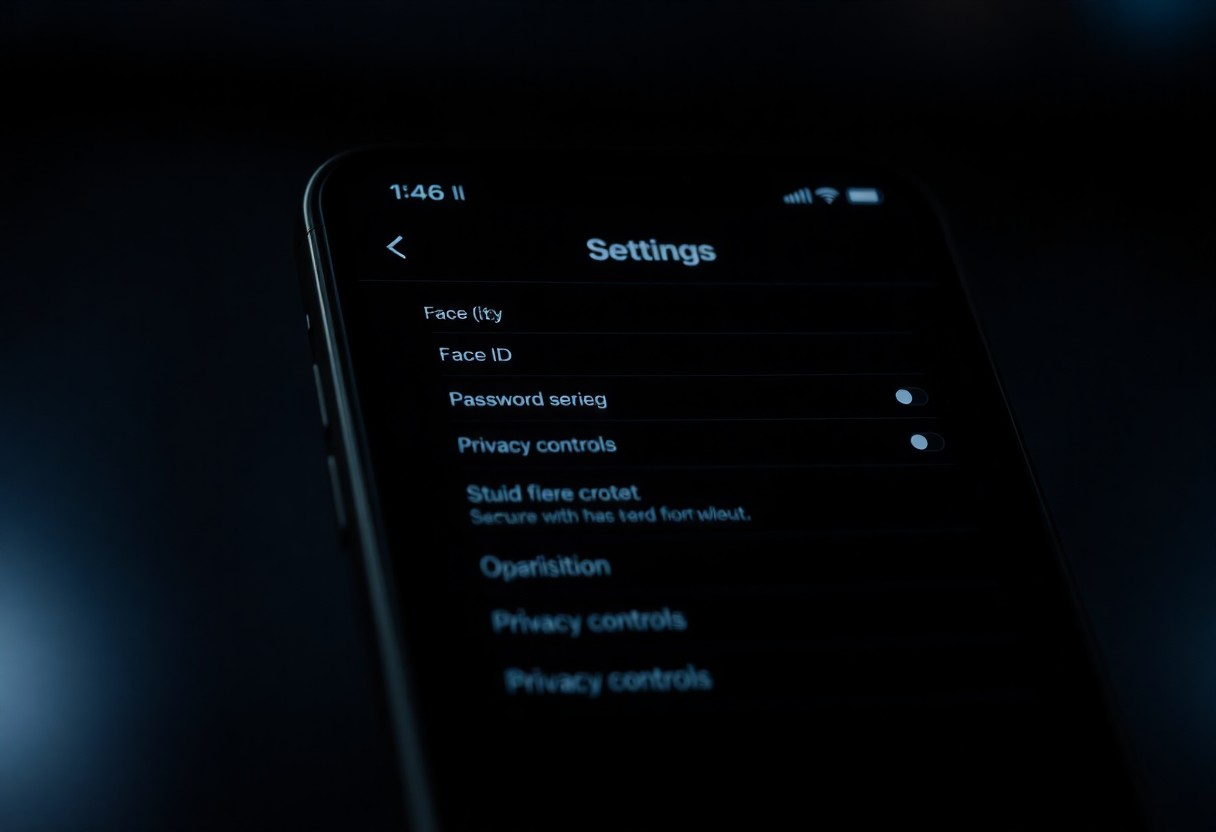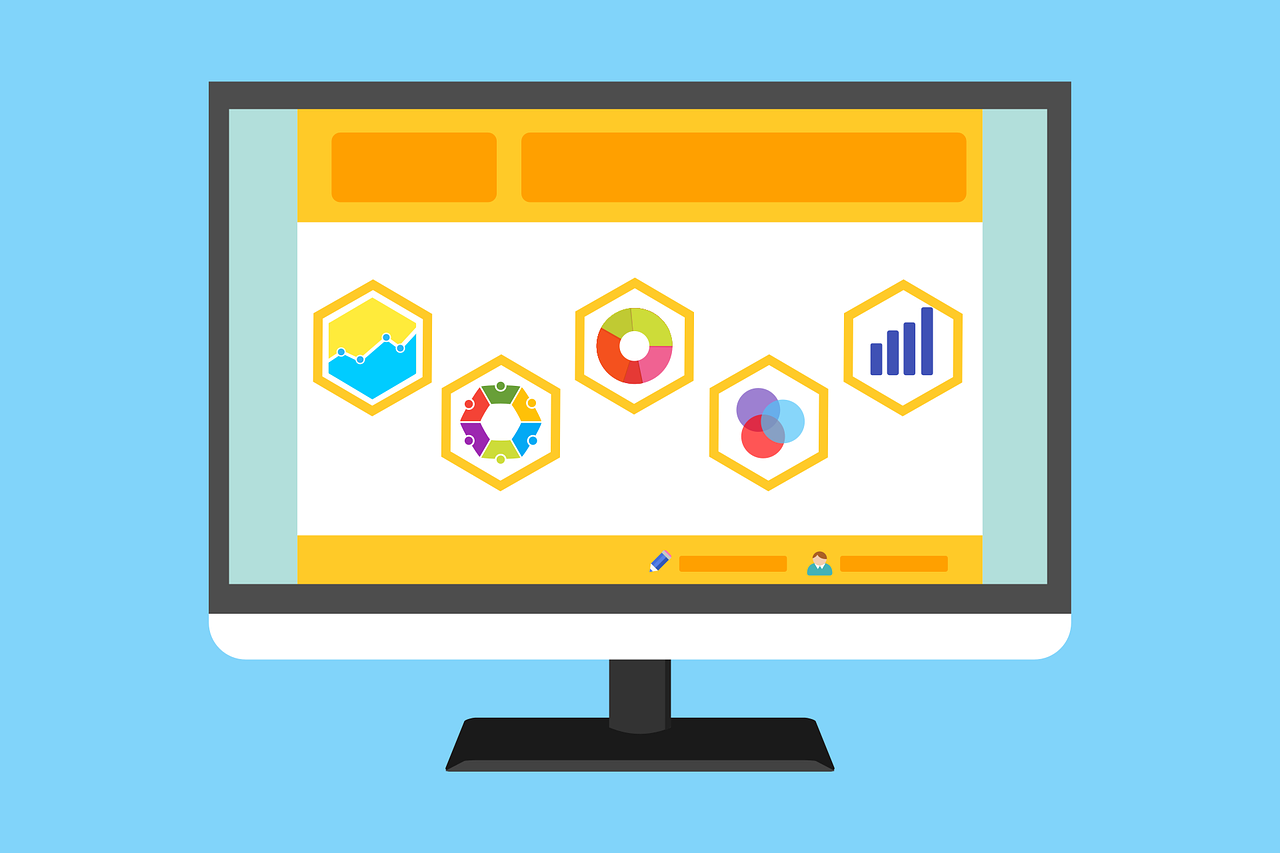You may be tempted to connect to public Wi-Fi networks during Labor Day weekend gatherings, but doing so can expose your personal information to security risks. With the convenience of free internet access comes the potential for data breaches and hacking. To keep your browsing safe, it’s vital to follow these five simple moves that will help protect your devices and maintain your online privacy while enjoying the holiday festivities. Equip yourself with knowledge and safeguard your digital life this weekend.
Key Takeaways:
- Use a Virtual Private Network (VPN) for secure connections on public Wi-Fi.
- Avoid accessing sensitive information, such as online banking, while on public networks.
- Verify the network name before connecting to prevent spoofing attacks.
The Risks Lurking in Public Wi-Fi Networks
Public Wi-Fi networks present significant risks that can expose your personal information to cybercriminals. While convenient, these networks often lack adequate security measures, making it easy for malicious entities to intercept your data. The absence of encryption and oversight allows hackers to access sensitive information like passwords and credit card details with minimal effort. Staying informed about these dangers is vital for safeguarding your digital life while you enjoy your Labor Day weekend outings.
The Dangers of Unsecured Connections
Unsecured connections leave your device vulnerable to unauthorized access. Without encryption, data transmitted over these networks can be intercepted by anyone within range. A simple software tool can enable attackers to view the websites you visit, read your messages, or even access sensitive documents you may inadvertently share. The ease with which your information can be compromised underscores the risks of using public Wi-Fi.
Common Cyber Threats to Beware Of
Various cyber threats lurk within public Wi-Fi networks, posing substantial risks to your data security. Man-in-the-middle attacks allow hackers to intercept communications, making it seem like a harmless interaction. Rogue hotspots can masquerade as legitimate networks, tricking you into connecting and exposing sensitive information. Additionally, malware can be silently distributed over these networks, infecting your device without your knowledge.
Man-in-the-middle attacks are particularly alarming; once established, cybercriminals can invisibly intercept and alter your communications. A study revealed that 50% of public Wi-Fi users unknowingly connect to spoofed networks that mimic legitimate ones. Furthermore, rogue hotspots can appear in crowded areas, delivering a false sense of security while data gets siphoned off effortlessly. Malware distributed via public Wi-Fi can lead to identity theft or loss of financial information, emphasizing the importance of caution when connecting to these networks.
Essential Moves to Secure Your Connection
Securing your connection involves several imperative moves that ensure your personal information remains protected while using public Wi-Fi. These steps include utilizing a Virtual Private Network (VPN), activating Two-Factor Authentication, and regularly updating your software. Each of these actions enhances your digital security, making it significantly harder for unauthorized parties to access your data during the busy Labor Day weekend.
Using a Virtual Private Network (VPN)
A VPN encrypts your internet traffic, making it unreadable to anyone attempting to intercept it. By routing your connection through a secured server, you mask your IP address and protect your browsing activities from prying eyes. Instead of connecting directly to a public network, your data travels through this encrypted tunnel, greatly reducing the risk of exposure to data theft.
Activating Two-Factor Authentication
Two-Factor Authentication (2FA) adds an extra layer of security by requiring a second verification method to access your accounts. This means that even if someone obtains your password, they still cannot access your information without your second factor, such as a text message code or authentication app. Implementing 2FA significantly decreases the chances of unauthorized access, particularly in high-risk environments like public Wi-Fi networks.
With 2FA enabled, you’ll receive a prompt for additional verification whenever you attempt to log into sensitive accounts or applications. For instance, if you try to access your bank account from a public Wi-Fi network, a code will be sent to your smartphone. This requirement ensures that even if your password is compromised, the hacker would need your physical device to gain access, effectively adding a robust barrier against intrusions.
Regularly Updating Your Software
Keeping your software up to date is imperative for protecting against vulnerabilities that cybercriminals exploit. Software updates often include security patches that address known weaknesses, ensuring your devices are equipped with the latest defenses against malware and attacks. Regularly checking for updates on your operating system, applications, and antivirus tools provides a proactive approach to safeguarding your connection.
Updates typically contain significant security enhancements and bug fixes that can prevent exploitation. Cyber threats evolve quickly, and software developers consistently adjust their applications to combat these challenges. Failing to update can leave your device open to attacks, so consider enabling automatic updates if available, which streamlines the process and ensures you’re consistently protected as new vulnerabilities emerge.
Recognizing Secure Signal Strength
Assessing the signal strength of a Wi-Fi connection can reveal important information about its security. A strong signal can indicate a reliable network, but it doesn’t guarantee safety. Use your device’s network settings to check for encryption indicators, such as WPA2, which indicates a more secure connection. Avoid connecting to weak signals, as they may be less stable and potentially run by malicious users looking to exploit unsuspecting victims.
Identifying Trusted Networks in a Crowd
In busy public spaces, identifying trusted networks often requires vigilance. Always look for networks hosted by reputable establishments, which typically include the location’s name, rather than generic names like “Free Wi-Fi.” Confirm the official name with staff if you’re uncertain. Avoid connecting to unknown or suspicious-sounding networks, as they can be honeypots designed to siphon off your personal data.
The Importance of HTTPS Encryption
HTTPS encryption acts as a protective barrier while you browse the web by adding a layer between your data and potential eavesdroppers. When a website displays HTTPS in its URL, it means your communication with that site is encrypted, drastically reducing the chance of interception. Always prioritize HTTPS sites, especially when entering sensitive information, because unencrypted HTTP sites leave you vulnerable to data theft, with studies showing over 80% of public Wi-Fi users unduly exposed without HTTPS.
Smart Browsing Habits for Public Spaces
Adopting smart browsing habits can significantly enhance your security when using public Wi-Fi. Awareness and vigilance are your top defenses against potential threats. Always be mindful of your surroundings and the network you’re connected to, ensuring that you use trusted sources and keep an eye on your device’s settings. Simple practices, like disabling automatic connections to unfamiliar networks, can prevent unauthorized access and potential breaches.
Limiting Personal Information Exposure
Minimizing the amount of personal information you share while on public Wi-Fi is important. Avoid logging into sensitive accounts or using apps that require unnecessary personal data. Using incognito or private browsing modes can further reduce the risk of your information being stored or tracked, as these settings do not save your browsing history or cache.
Avoiding Sensitive Transactions on Public Networks
Performing sensitive transactions, such as online banking or shopping, on public networks exposes you to significant risks. Cybercriminals often monitor these networks, capturing data transferred without adequate security measures. Even seemingly harmless tasks, like checking email, can lead to data leaks if sensitive information is involved. Consider using a mobile hotspot or waiting for a secure connection whenever possible.
Conducting transactions—especially those involving financial data—over public Wi-Fi can lead to severe consequences. Cyber attackers may employ techniques like packet sniffing, capturing unencrypted data as it travels over the network. For example, simply logging into your bank account can be enough for hackers to seize your credentials, especially if you’re on a typical unsecured public network. If you must engage in such activities, invest in a Virtual Private Network (VPN) to encrypt your data, adding a layer of security against prying eyes.
Digital Detox: When to Disconnect and Reconsider
Taking a step back from the constant connectivity can significantly enhance your overall well-being. Prioritize moments where the digital world fades into the background, such as during family gatherings, outdoor adventures, or even while enjoying a good book. Establishing tech-free zones or times, such as the dinner table or weekends, can help foster deeper connections with those around you. Notice how you feel when you detach; it’s often refreshing and energizing, allowing for clarity and presence in your daily life.
Recognizing Safe Times to Go Offline
Evaluate your schedule and identify intervals of downtime where unplugging is possible. Weekends, vacations, or specific hours in your day can serve as ideal moments to disconnect. If you find yourself scrolling through social media instead of engaging with the world, it’s a sign you may need to take a break. Developing the habit of regularly assessing your screen time helps to create more balanced engagement without digital distractions.
Exploring Alternatives to Public Wi-Fi
Consider options like personal hotspots or tethering from your smartphone when public Wi-Fi is untrustworthy. Many cellular plans offer data that can support your connectivity needs, making them a safer choice. Additionally, venues like libraries or cafés may provide secured networks that offer more peace of mind than generic public connections. Some businesses even allow you to use their Wi-Fi only after verifying your identity, adding an extra layer of security.
Using personal mobile hotspots can be a game-changer when avoiding the pitfalls of public Wi-Fi. Utilizing your phone’s data plan can prevent the risks associated with unsecured networks, as your connection remains encrypted and private. Look into providers that offer unlimited data plans if frequent connectivity is a necessity. Other alternatives include portable Wi-Fi devices that create a localized network for your personal use, reducing vulnerability to potential hackers lurking on public networks. Prioritizing these secure options fosters safer browsing while you travel or relax during holidays.
To wrap up
Hence, ensuring safe browsing on public Wi-Fi during Labor Day weekend involves adopting simple but effective strategies. By using a VPN, avoiding sensitive transactions, and keeping your software updated, you can significantly reduce your risk of cyber threats. Additionally, selecting secure networks and limiting your shared information will further protect your personal data. By following these five moves, you empower yourself to enjoy your holiday while staying safe online.



